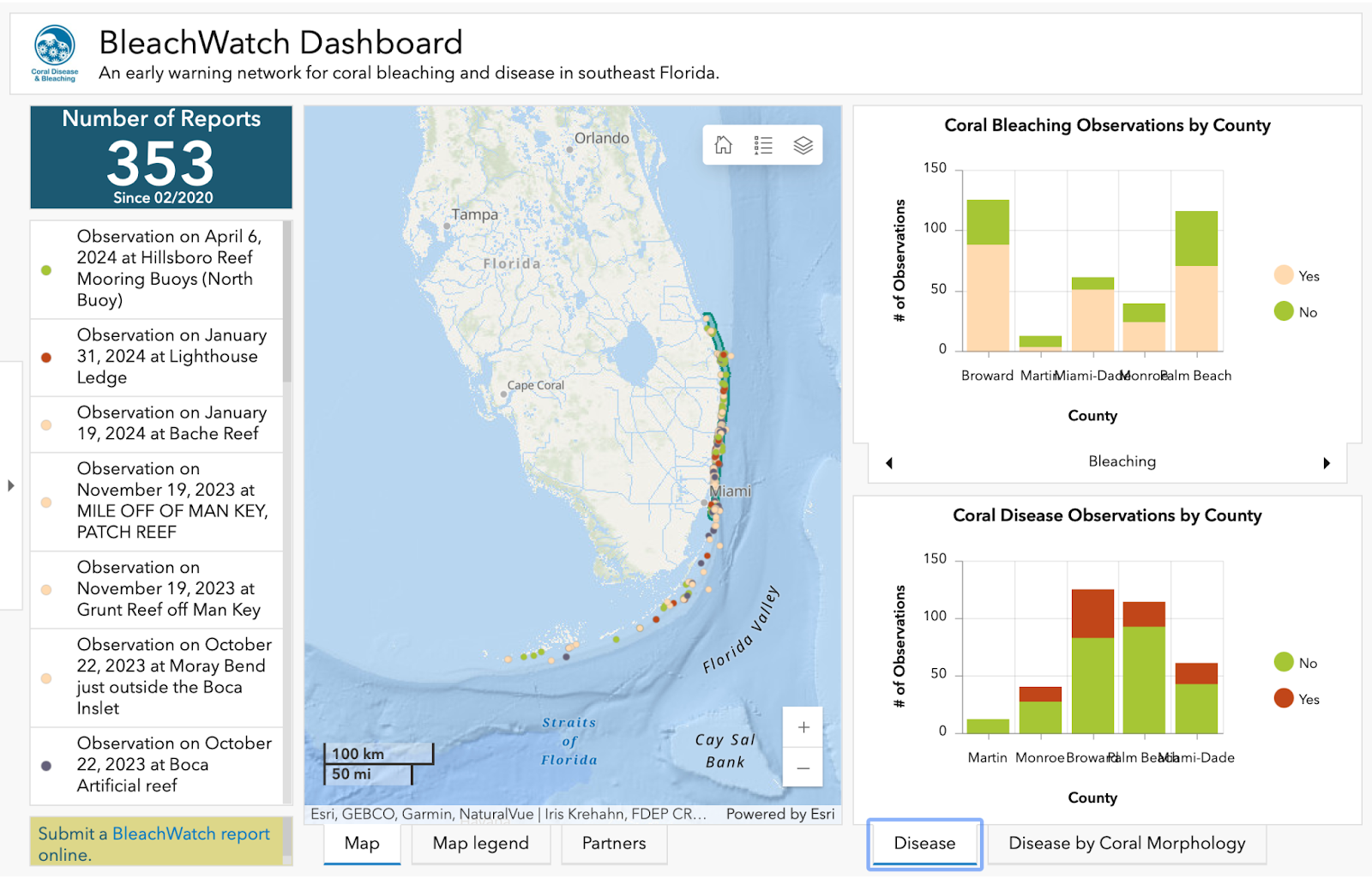NSU SWMS Hosts SEAFAN BleachWatch Workshop
Organized by Megan Miller and Breanna Vanderplow
Nova Southeastern University’s (NSU) SWMS chapter hosted a SEAFAN BleachWatch workshop to educate club members, students, and early career ocean scientists on coral bleaching and disease. SEAFAN BleachWatch engages citizen scientists using their BleachWatch Observer Network to detect and monitor coral bleaching events and disease in Southeast Florida. The program tracks weather conditions and sea surface temperatures, collects field observations on reef conditions, and collects and analyzes data to report coral reef conditions to the public, government officials, and local policy makers. The training taught participants how to identify coral species, critical differences between coral bleaching and disease, and how to report these critical phenomena if seen while out diving or snorkeling.
NSU SWMS members and training instructor Taylor Tucker
While you may have heard the terms coral bleaching and disease, you may be wondering: “What’s the difference?” Coral bleaching occurs when zooxanthellae, the algae living within the coral polyp, are expelled, leaving the coral unable to feed themselves. During coral bleaching, the coral polyp tissue remains intact. Luckily, bleached corals are not dead, and can in fact recover from bleaching if conditions become favorable in time for the algae to return before the corals die. A main driver for coral bleaching is heat stress, but other causes include salinity changes, anoxic (low oxygen) conditions, pollution, increased sediment, and ocean acidification. However, even if coral colonies recover from bleaching, there are often long term effects on the coral’s reproduction, growth, and susceptibility to disease, predation, and death. White coral does not always indicate bleaching! Corals can be white from predation or from new growth. Coral disease, on the other hand, is caused by fungal, viral, or bacterial infections that lead to tissue loss of the coral polyp. Stony Coral Tissue Loss has been a critical disease spreading in Florida’s Coral Reef and the Caribbean since 2014.
Since the 1980’s, coral bleaching has become more frequent and severe along Florida’s Coral Reef as water temperatures have steadily increased. Particularly, the 2023 bleaching event which was associated with the 2023 El Niño event, lead to mass bleaching events, population decline, and coral mortality as water temperatures reached 93℉ in some areas (Florida Fish and Wildlife Commission). The Florida Keys BleachWatch Program was created to monitor and be an early warning network for coral bleaching in 2005. The program was developed by the Florida Keys National Marine Sanctuary and Mote Marine Laboratory and modeled after the Great Barrier Reef BleachWatch Program. The SEAFAN BleachWatch program was born in 2013 to extend the program north of the Florida Keys to Miami-Dade, Broward, Palm Beach, and Martin counties.
BleachWatch does not only monitor coral bleaching. Coral disease has also plagued the Florida Reef Tract, beginning in Miami-Dade County in 2014. Since then coral disease has spread throughout Florida’s Coral Reef, motivating SEAFAN to expand the BleachWatch program to include coral disease monitoring. When Stony Coral Tissue Loss is reported to BleachWatch, corals are treated and tagged so that their disease and hopeful recovery can be monitored.
The BleachWatch team also monitors and predicts when conditions may be favorable for bleaching events, so that divers can keep their eye out before, during, and after a bleaching event occurs. Divers can print out data sheets or complete them online, which provides critical data to help scientists better understand coral bleaching and disease. They are also encouraged to send in photos of reef conditions. Remember, understanding when bleaching and disease is not present is just as important as when disease and bleaching is present! BleachWatch collects, analyzes, and publishes the collected reports on their website on the BleachWatch Dashboard, shown below.
The SEAFAN BleachWatch dashboard used to visualize Florida coral bleaching and disease.
With the help of citizen scientists trained to decipher between coral disease and bleaching, the BleachWatch program has helped scientists and decision makers understand outbreaks and coordinate treatment and intervention. During the BleachWatch training, NSU SWMS gained valuable skills to employ on their upcoming work related and leisure dives that will help conserve Florida’s Coral Reef!
Want to learn more or sign up to participate in a training? Check out the SEAFAN and BleachWatch Florida Keys websites here:
https://floridadep.gov/rcp/coral/content/bleachwatch
https://mote.org/research/program/coral-reef-science-monitoring/bleachwatch
And you can follow Friends of Our Florida Reefs on Instagram @floridareefs!



